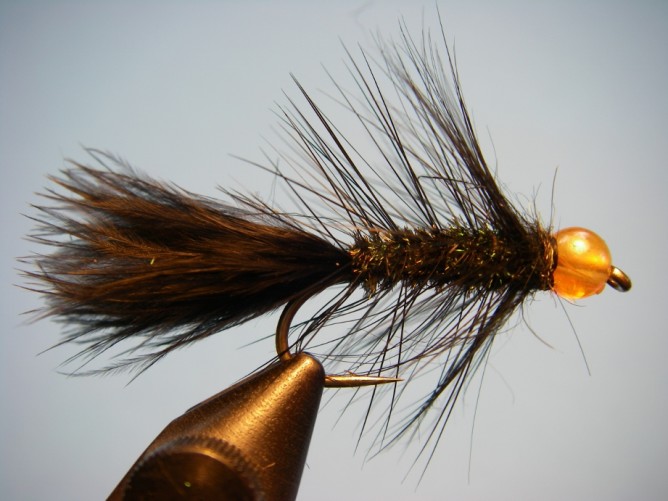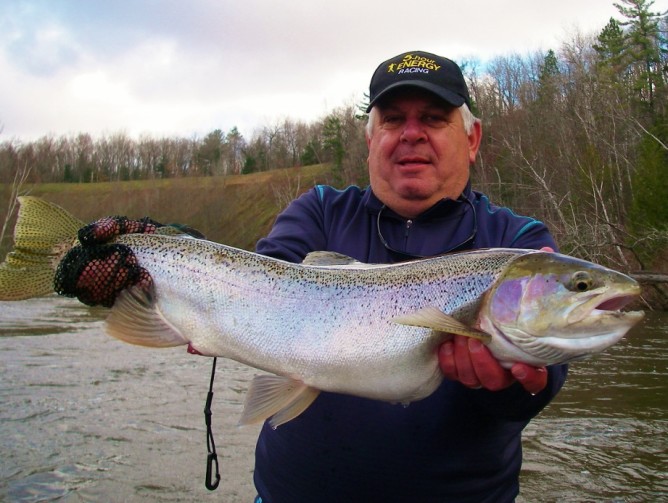Egg Sucking Leech patterns are well known by steelhead and salmon anglers and this pattern is just a little more realistic looking than many of the patterns found in fly shops today.
The typical “egg” on ESL patterns is made of bright chenille or even ice dub and really serves as a large attractor/focal point to get aggressive fish to take it. While aggressive fish of these species do exist, I feel there tends to be more fish that aren’t aggressive on an everyday basis, therefore increasing the probability of fish eating this less obtrusive pattern. The larger, gaudy and obnoxious looking patterns – I have witnessed – can turn fish aside where this “kinder, gentler” pattern tends to move into the fish’s view and often garners a feeding response.
While leeches exist in many rivers, I don’t think they ever attach themselves to free drifting eggs. I think the idea of the Egg Sucking Leech fly pattern is that of a big and bright attractor (egg) attached to large black or purple body (leech) – this pattern is a tamer version of that idea. Do I fish patterns both big, gaudy and attention grabbing as well as the smaller, “natural looking” patterns like this one? Yes, but if I had to choose just one of the two, it would be this one – especially for steelhead fishing. The plastic bead specified is a very realistic imitation of natural steelhead eggs in regards to color and size.
The pattern itself is really quick and easy to tie which is important to Steelhead and Salmon anglers in the Great Lake Tributaries since we tend to go through a lot of flies.
Recipe
Hook: TMC 3761 #6
Thread: Uni 6/0 Black or Olive Dun
Tail: Wooly Bugger Marabou – Black
Body: Peacock Herl and Peacock Herl Dubbing
Hackle: Indian Saddle – Black
Collar: Dubbing – Arizona Synthetic – Peacock
Bead: Pucci 5mm Orange Pearl
Tying Instructions:
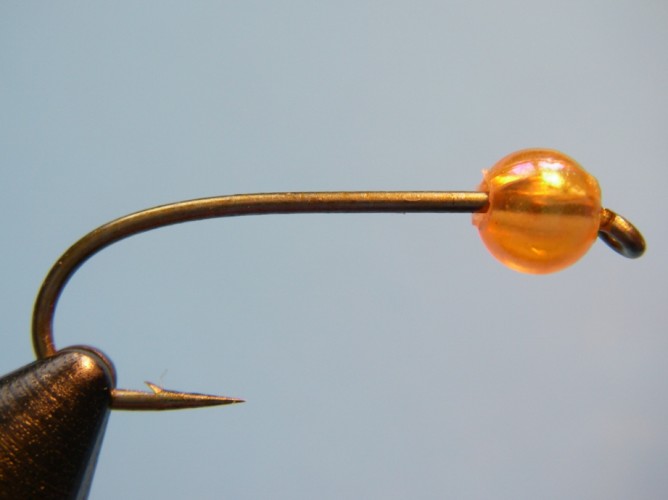 Step 1. Place the bead onto hook. Sometimes the hole is too small and
Step 1. Place the bead onto hook. Sometimes the hole is too small and
either the barb needs to be slightly flattened or you can use a 1/2″ countersink
drill bit by hand to slightly increase the hole’s size on back side.
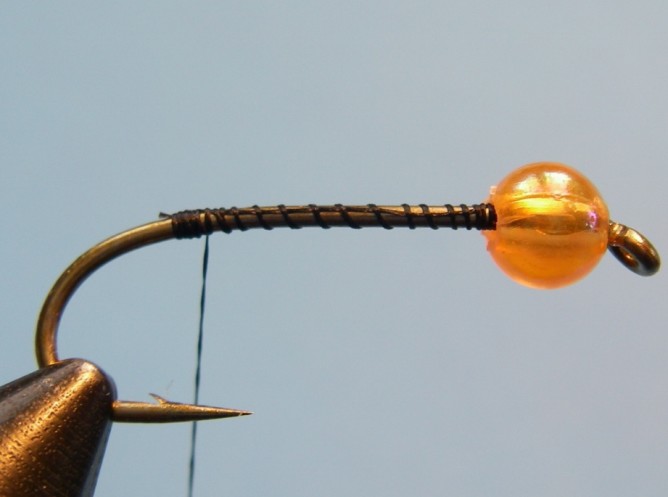 Step 2. Wrap a thread base from behind the plastic bead to above the hook barb.
Step 2. Wrap a thread base from behind the plastic bead to above the hook barb.
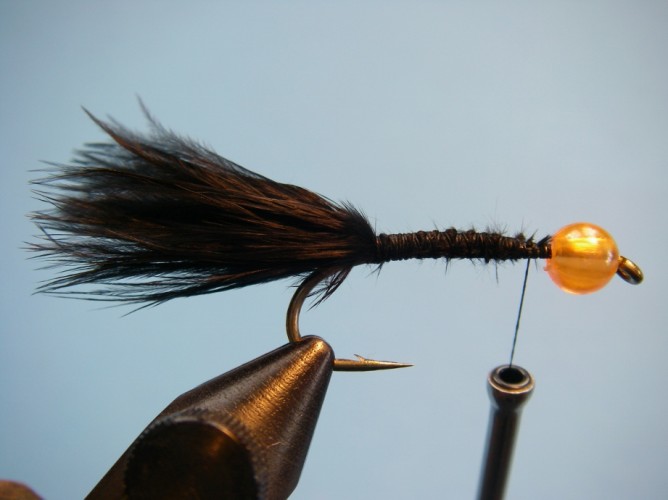 Step 3. Tie in the marabou tail so it extends one hook shank’s length.
Step 3. Tie in the marabou tail so it extends one hook shank’s length.
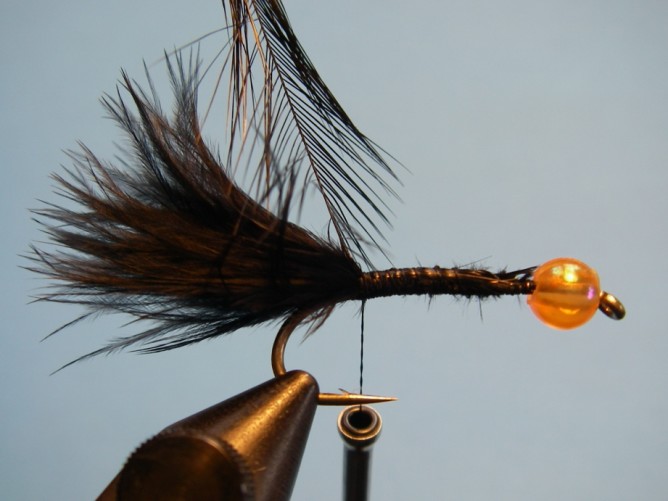 Step 4. Tie in a hackle feather by the tip. Make sure that the hackle barbs won’t
Step 4. Tie in a hackle feather by the tip. Make sure that the hackle barbs won’t
extend perpendicular to the hook shank more than 1-1/2 times the hook gape.
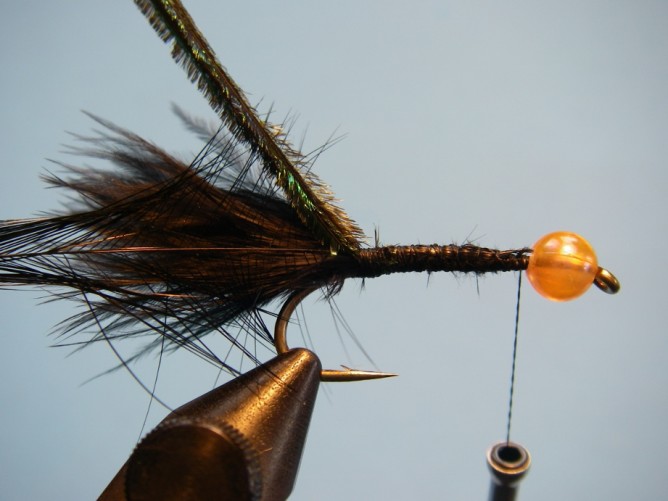 Step 5. Tie in 4 or 5 peacock herl by the tip.
Step 5. Tie in 4 or 5 peacock herl by the tip.
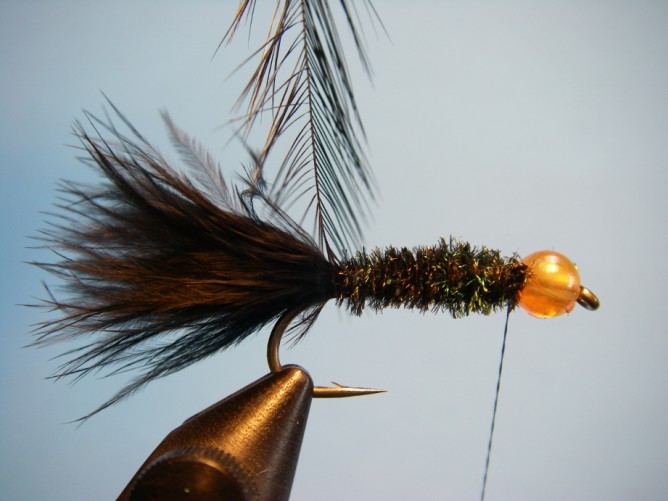 Step 6. Wind the peacock forward to just behind the bead forming a nice, slightly tapered body.
Step 6. Wind the peacock forward to just behind the bead forming a nice, slightly tapered body.
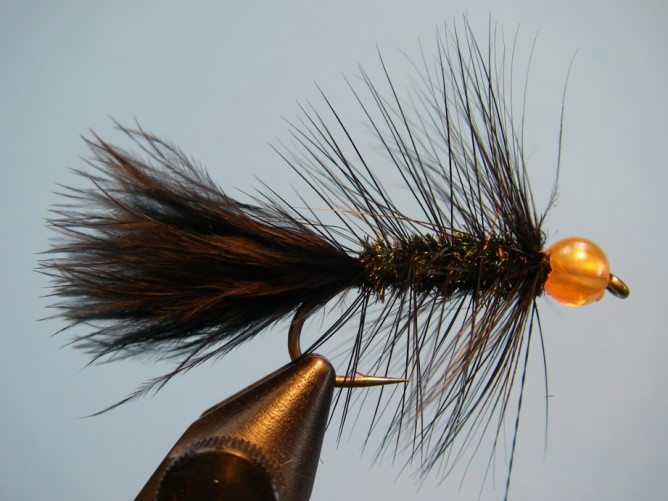 Step 7. Palmer the hackle feather to just behind the bead.
Step 7. Palmer the hackle feather to just behind the bead.
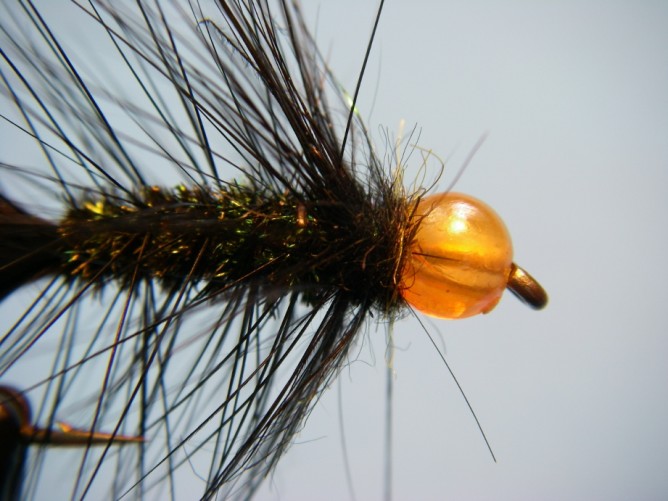 Step 8. Place a little dubbing between the hackle and
Step 8. Place a little dubbing between the hackle and
bead to bridge the gap between the body, hackle and bead.

